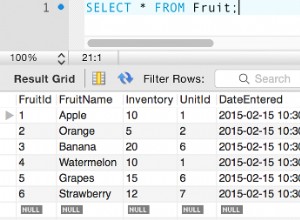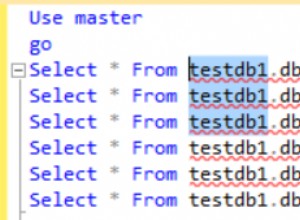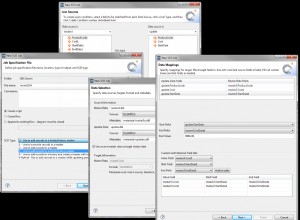Você poderia, como disse, ter uma tabela que armazena todos os primos até 10 milhões . Então seria trivial verificar se um número era primo ou não. A questão então é qual método seria mais rápido. Suspeito que a tabela seria muito mais rápida (não testei essa afirmação).
Solução de tabela principal
-
https:// www.simple-talk.com/sql/t-sql-programming/celkos-summer-sql-stumpers-prime-numbers/
Fornece algumas soluções e há mais nos comentários.
-
https:// sqlserverfast.com/blog/hugo/2006/09/the-prime-number-challenge-great-waste-of-time/
O mesmo aqui. Algumas soluções fornecidas.
Soluções de funções SQL
Solução 0Aqui está uma solução via Encontrar números primos com uma função Transact-SQL :
SET ANSI_NULLS ON
GO
SET QUOTED_IDENTIFIER ON
GO
–- =============================================
–- Author: Nicolas Verhaeghe
–- Create date: 12/14/2008
–- Description: Determines if a given integer is a prime
/*
SELECT dbo.IsPrime(1)
SELECT dbo.IsPrime(9)
SELECT dbo.IsPrime(7867)
*/
–- =============================================
CREATE FUNCTION [dbo].[isPrime]
(
@NumberToTest int
)
RETURNS bit
AS
BEGIN
-– Declare the return variable here
DECLARE @IsPrime bit,
@Divider int
–- To speed things up, we will only attempt dividing by odd numbers
–- We first take care of all evens, except 2
IF (@NumberToTest % 2 = 0 AND @NumberToTest > 2)
SET @IsPrime = 0
ELSE
SET @IsPrime = 1 –- By default, declare the number a prime
–- We then use a loop to attempt to disprove the number is a prime
SET @Divider = 3 -– Start with the first odd superior to 1
–- We loop up through the odds until the square root of the number to test
–- or until we disprove the number is a prime
WHILE (@Divider <= floor(sqrt(@NumberToTest))) AND (@IsPrime = 1)
BEGIN
–- Simply use a modulo
IF @NumberToTest % @Divider = 0
SET @IsPrime = 0
–- We only consider odds, therefore the step is 2
SET @Divider = @Divider + 2
END
–- Return the result of the function
RETURN @IsPrime
END
Aqui está outra solução via como descobrir se é primo ou não primo com uma instrução select? Há mais informações em outros comentários também.
CREATE FUNCTION isPrime
(
@number INT
)
RETURNS VARCHAR(10)
BEGIN
DECLARE @prime_or_notPrime INT
DECLARE @counter INT
DECLARE @retVal VARCHAR(10)
SET @retVal = 'FALSE'
SET @prime_or_notPrime = 1
SET @counter = 2
WHILE (@counter <= @number/2 )
BEGIN
IF (( @number % @counter) = 0 )
BEGIN
set @prime_or_notPrime = 0
BREAK
END
IF (@prime_or_notPrime = 1 )
BEGIN
SET @retVal = 'TRUE'
END
SET @counter = @counter + 1
END
return @retVal
END




